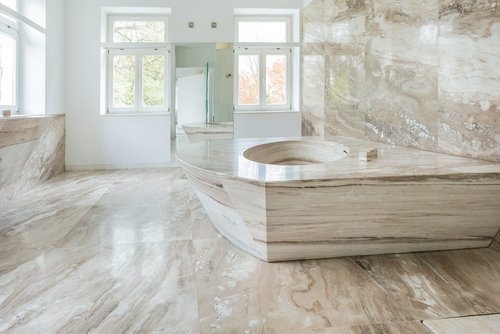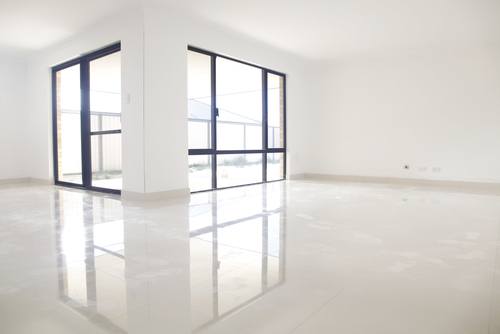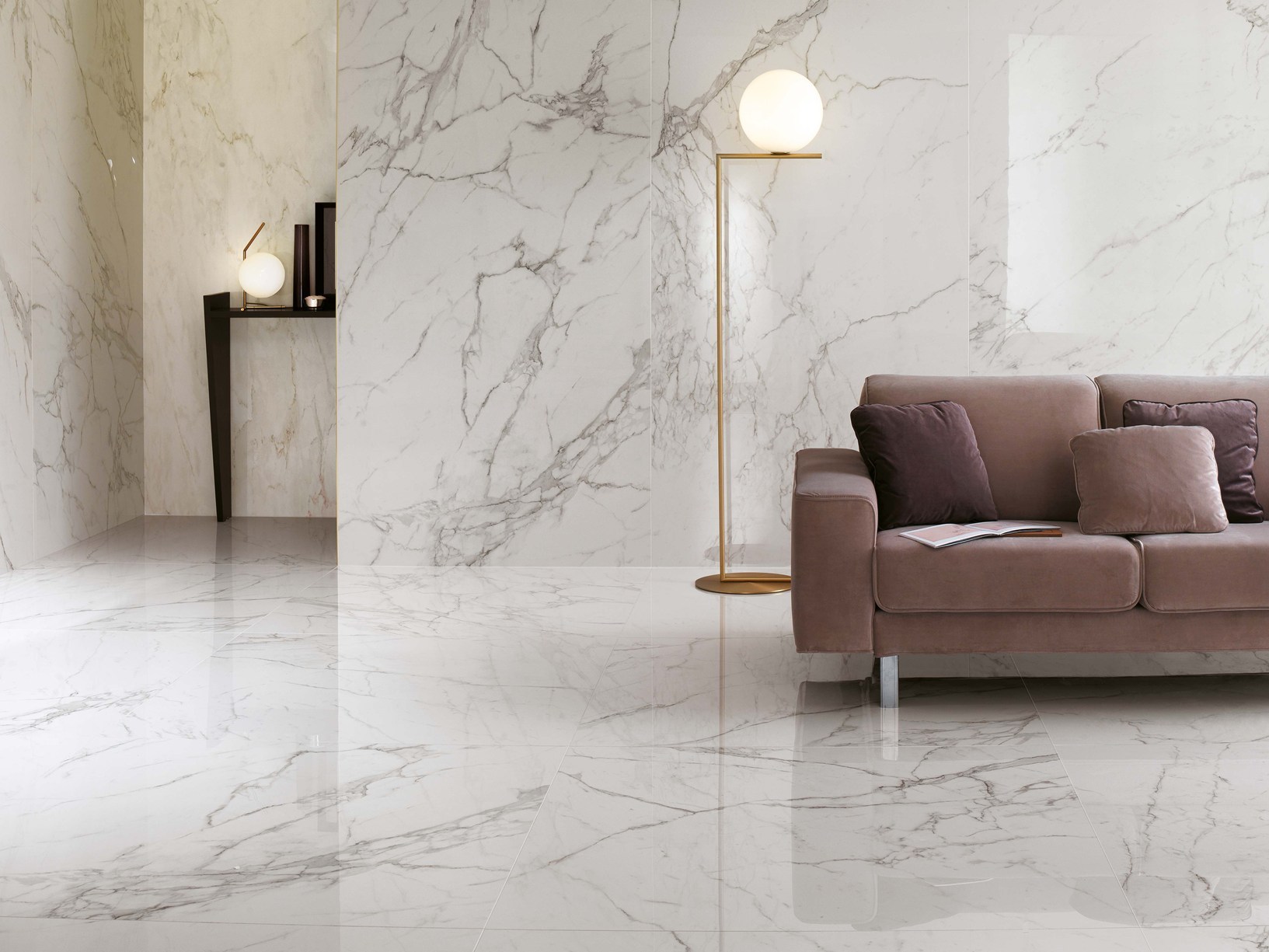The Cost of Marble Flooring: Exploring the Initial Investment
Marble flooring is often associated with luxury and elegance, but it comes at a price. Let’s talk about the cost of marble flooring and explore the initial investment required. From the cost per square foot to installation expenses, we will provide a comprehensive overview of the financial considerations involved in choosing marble flooring for your home or business.
- Cost per Square Foot: One of the primary factors that determine the cost of marble flooring is the price per square foot. The cost can vary significantly depending on the type of marble chosen, with rarer and more exotic varieties commanding a higher price. On average, you can expect to pay between $10 and $50 per square foot for marble flooring materials alone.
- Installation Expenses: In addition to the cost of the marble itself, you must also consider the installation expenses. Marble flooring requires skilled labor due to its delicate nature, which can add to the overall cost. The installation process involves preparing the subfloor, applying adhesive, and carefully laying each marble tile. Depending on the complexity of the project, installation costs can range from $5 to $15 per square foot.
- Additional Costs: It’s important to keep in mind that the initial investment for marble flooring goes beyond the cost of materials and installation. Additional expenses may include underlayment, sealant, and grout. These costs can vary depending on the specific requirements of your project, but it’s essential to factor them into your budget to ensure an accurate estimate.
- Maintenance and Upkeep: While the initial investment in marble flooring may seem high, it’s crucial to consider the long-term costs as well. Marble requires regular maintenance to preserve its beauty and durability. This includes periodic sealing, polishing, and cleaning with specialized products. These maintenance expenses should be taken into account when evaluating the overall cost of marble flooring.
- Return on Investment: Despite its initial expense, marble flooring can offer a significant return on investment. Its timeless appeal and durability can enhance the value of your property, making it an attractive feature for potential buyers. Additionally, the luxurious aesthetic of marble flooring can elevate the overall ambiance of your space, creating a visually stunning environment.

Factors that Influence the Price of Marble Flooring
The price of marble flooring can vary significantly, and understanding the factors that influence its cost is crucial when making purchasing decisions. Below are the key factors that impact the price of marble flooring. From the type of marble to its quality and origin, we will provide insights into what drives the price variations in the market.
- Type and Rarity of Marble: The type of marble you choose plays a significant role in determining its cost. Some marbles, such as Carrara or Calacatta, are more readily available and therefore tend to be less expensive. On the other hand, rare and exotic varieties, like Statuario or Blue Bahia, command a premium price due to their scarcity and unique aesthetic appeal.
- Quality and Grade: Marble is classified into different grades based on its quality, with Grade A being the highest. The quality of marble is determined by factors such as color consistency, veining patterns, and overall appearance. Higher-grade marbles with fewer imperfections and a more uniform look generally come with a higher price tag.
- Origin of Marble: The geographical origin of marble can significantly impact its price. Some regions, like Italy or Greece, are famous for producing high-quality marble with a long-standing reputation. Marble sourced from these regions often carries a higher price due to its superior quality and craftsmanship. On the other hand, marbles from lesser-known origins may offer a more cost-effective alternative.
- Size and Thickness of Tiles: The size and thickness of marble tiles can also influence the overall cost. Larger tiles require more material and may result in higher expenses. Additionally, thicker tiles tend to be more durable and are often priced higher than thinner alternatives. Consider your specific requirements and budget when selecting the size and thickness of your marble flooring.
- Installation Complexity: The complexity of the installation can affect the overall cost of marble flooring. Intricate patterns, custom designs, or irregularly shaped spaces may require more time and expertise from professional installers, leading to higher labor costs. It’s important to factor in the installation complexity when estimating the total expenses of your marble flooring project.
Comparing the Costs: Is Marble Flooring Worth the Expense?
With the allure of its luxurious appearance, marble flooring often comes with a higher price tag compared to other flooring options. Let’s discuss the question of whether marble flooring is worth the expense. By comparing its benefits and drawbacks to alternative materials, we aim to help you make an informed decision about investing in marble flooring.
Aesthetics and Elegance: One of the primary reasons why people choose marble flooring is its unmatched beauty and elegance. Marble’s natural veining and unique patterns create a luxurious and timeless look that can enhance any space. The visual impact of marble flooring adds significant value and can elevate the overall ambiance of a room, making it a worthwhile investment for those seeking a sophisticated aesthetic.
Durability and Longevity: Marble is renowned for its durability and longevity, making it an attractive option for high-traffic areas. When properly cared for, marble flooring can withstand the test of time and maintain its original beauty for decades. Unlike other flooring materials that may require frequent replacements, marble flooring offers a long-term solution that can reduce the need for future expenses.
Heat Conductivity: Marble has excellent heat conductivity properties, making it an ideal choice for homes with underfloor heating systems. The ability of marble to retain and radiate heat efficiently can result in energy savings and increased comfort during colder months. This added benefit can contribute to the overall value of marble flooring and justify its higher cost.
Maintenance and Upkeep: While marble flooring offers numerous benefits, it does require regular maintenance to preserve its appearance and durability. Marble is susceptible to etching and staining, so it’s crucial to use proper cleaning products and avoid harsh chemicals. Additionally, periodic sealing and polishing are necessary to keep the marble in optimal condition. The cost and effort involved in maintenance should be considered when evaluating the overall worth of marble flooring.
Alternatives to Consider: When comparing the costs of marble flooring, it’s essential to explore alternative materials that may offer a more budget-friendly option. Options such as porcelain or ceramic tiles can provide a similar aesthetic appeal at a lower price point. Laminate or vinyl flooring can also mimic the look of marble while being more affordable and easier to maintain. Considering these alternatives can help you find a balance between cost and desired appearance.
Long-Term Benefits of Marble Flooring: A Cost-Effective Choice?
When considering the financial aspects of marble flooring, it’s essential to evaluate its long-term benefits and cost-effectiveness. Here are the advantages that marble flooring offers over time, making it a wise investment for those looking beyond the initial expense. From its durability and resale value to its hypoallergenic properties, we will highlight why marble flooring can be a cost-effective choice.
Durability and Longevity: Marble is known for its durability, making it a cost-effective choice in the long run. Unlike other flooring materials that may wear out or require frequent replacements, marble flooring can withstand heavy foot traffic and maintain its beauty for decades. Its resistance to scratches, stains, and impact damage ensures that your investment will last, reducing the need for future expenses.
Timeless Beauty and Resale Value: Marble flooring is considered a timeless and luxurious option that never goes out of style. Its elegant appearance can increase the value of your property and make it more appealing to potential buyers. When it comes time to sell, the resale value of a home or business with marble flooring is often higher, providing a return on your initial investment.
Hypoallergenic Properties: Marble flooring is hypoallergenic, making it an excellent choice for those with allergies or respiratory sensitivities. Unlike carpets that can trap dust, pet dander, and allergens, marble provides a smooth and easy-to-clean surface that helps maintain a healthier indoor environment. This can lead to cost savings by reducing the need for specialized cleaning or allergy-related treatments.
Versatility and Adaptability: Marble flooring offers versatility in terms of design and adaptability to different styles and aesthetics. Whether you prefer a classic, contemporary, or eclectic look, marble can be incorporated seamlessly into various interior design themes. Its timeless appeal ensures that you won’t need to replace it if you decide to update your decor in the future, making it a cost-effective choice in terms of design longevity.
Eco-Friendliness: Marble is a natural and sustainable material, making it an eco-friendly flooring option. Its longevity and recyclable properties contribute to reducing waste and environmental impact. Additionally, marble doesn’t release harmful chemicals or emit volatile organic compounds (VOCs) commonly found in synthetic flooring materials, ensuring a healthier living or working space.
Budget-Friendly Alternatives to Marble Flooring
Marble flooring can be a significant investment, and for those on a budget, exploring alternative options that provide a similar aesthetic appeal is essential. We will discuss budget-friendly alternatives to marble flooring, enabling you to find the perfect balance between cost and desired aesthetics. From laminate and vinyl to engineered stone and porcelain tiles, we will explore alternative materials that offer a cost-effective solution.
Laminate Flooring: Laminate flooring is a popular and cost-effective alternative to marble. It consists of multiple layers, including a high-resolution image of marble that mimics its appearance. Laminate flooring is durable, easy to maintain, and resistant to scratches and stains. It provides a similar aesthetic appeal to marble at a fraction of the cost, making it an attractive option for those on a budget.
Vinyl Flooring: Vinyl flooring offers versatility and affordability, with options that replicate the look of marble. Vinyl planks or tiles come in a wide range of styles, colors, and patterns, including marble-like designs. Vinyl is resistant to moisture, making it suitable for areas prone to water exposure, such as bathrooms and kitchens. It is also easy to install and maintain, providing a cost-effective alternative to marble flooring.
Engineered Stone: Engineered stone, such as quartz, is another budget-friendly alternative to marble flooring. It is composed of natural stone aggregates mixed with resins and pigments, creating a durable and low-maintenance material. Engineered stone can mimic the look of marble while offering enhanced strength and resistance to staining and scratching. Although it may not provide the exact elegance of marble, it offers a cost-effective compromise.
Porcelain Tiles: Porcelain tiles are a versatile and affordable option that can imitate the appearance of marble. These tiles are made from dense clay fired at high temperatures, resulting in a durable and water-resistant material. Porcelain offers a wide variety of colors and patterns, including marble-like veining. It is easy to clean and maintain, making it a practical alternative for those seeking a budget-friendly flooring option.
Natural Stone Look-Alikes: In addition to the aforementioned alternatives, there are natural stone look-alike options available in the market. These materials, such as ceramic tiles or laminated stone veneers, can replicate the appearance of marble at a more affordable price. While they may not possess the exact characteristics of marble, they offer a cost-effective solution for achieving a similar aesthetic.
Bathrooms Are the Next Frontier for Marble
The Most Expensive White Marble Collection
Marble Floors: Are They Worth It? Carolina Flooring Services
Related Posts:






